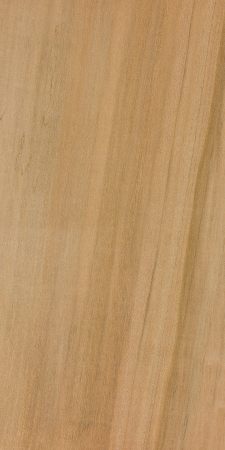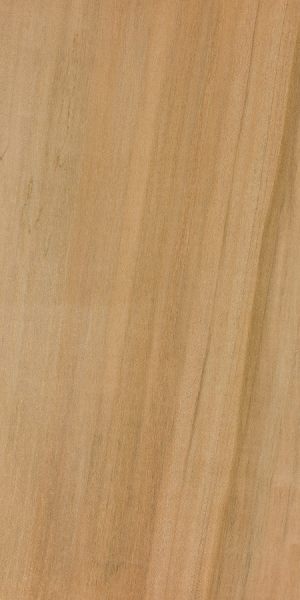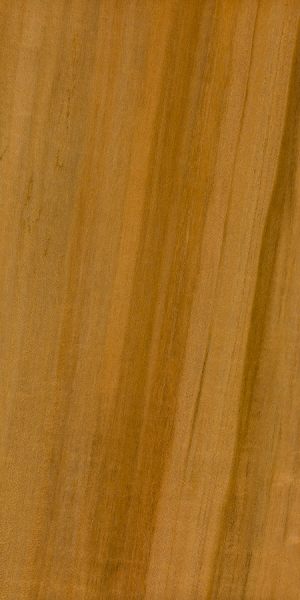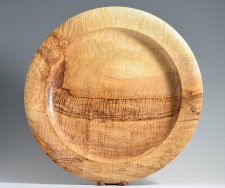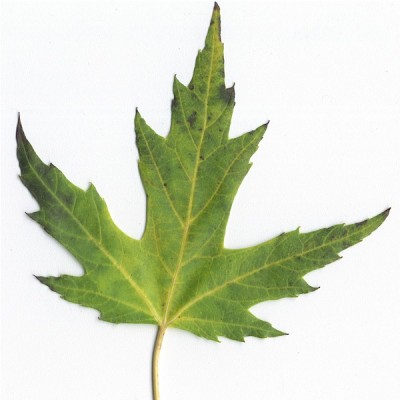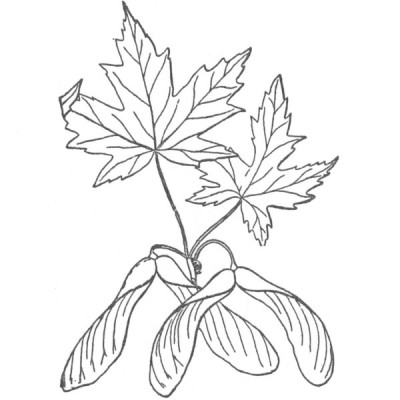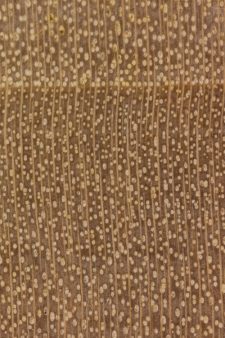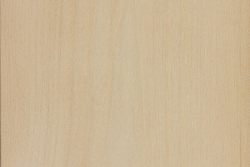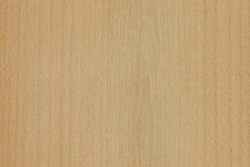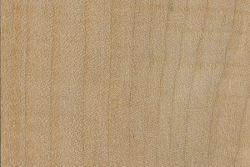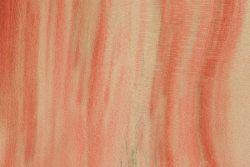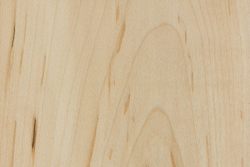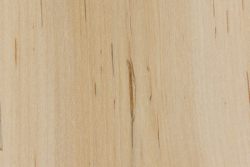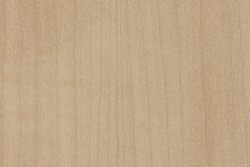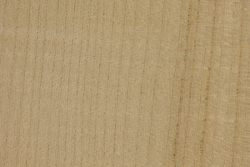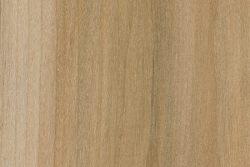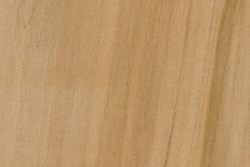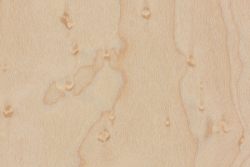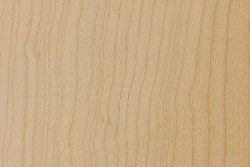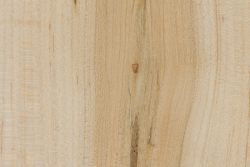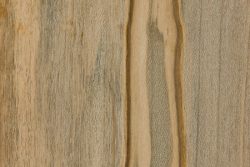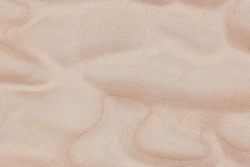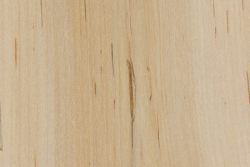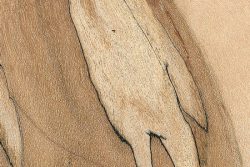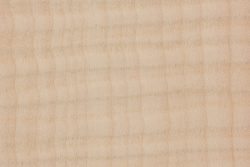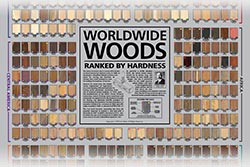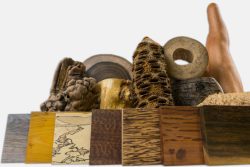Common Name(s): Silver maple
Scientific Name: Acer saccharinum
Distribution: Northeastern United States
Tree Size: 80-115 ft (25-35 m) tall,
2-3 ft (.6-1.0 m) trunk diameter
Average Dried Weight: 33 lbs/ft3 (530 kg/m3)
Specific Gravity (Basic, 12% MC):.44, .53
Janka Hardness: 700 lbf (3,110 N)
Modulus of Rupture: 8,900 lbf/in2(61.4 MPa)
Elastic Modulus: 1,140,000 lbf/in2(7.86 GPa)
Crushing Strength: 5,220 lbf/in2 (36.0 MPa)
Shrinkage: Radial: 3.0%, Tangential: 7.2%,
Volumetric: 12.0%, T/R Ratio: 2.4
Color/Appearance: Unlike most other hardwoods, the sapwood of maple lumber is most commonly used rather than its heartwood. Sapwood color ranges from almost white, to a light golden or reddish brown, while the heartwood is a darker reddish brown. Silver Maple can also be seen with curly or quilted grain patterns.
Grain/Texture: Grain is generally straight, but may be wavy. Has a fine, even texture. The growth rings tend to be lighter and less distinct in soft maples than in hard maple.
Rot Resistance: Rated as non-durable to perishable in regard to decay resistance.
Workability: Fairly easy to work with both hand and machine tools, though maple has a tendency to burn when being machined with high-speed cutters such as in a router. Turns, glues, and finishes well, though blotches can occur when staining, and a pre-conditioner, gel stain, or toner may be necessary to get an even color.
Odor: No characteristic odor.
Allergies/Toxicity: Silver maple, along with other maples in the Acer genus have been reported to cause skin irritation, runny nose, and asthma-like respiratory effects. See the articles Wood Allergies and Toxicity and Wood Dust Safety for more information.
Pricing/Availability: Should be very moderately priced, though figured pieces such as curly or quilted grain patterns are likely to be much more expensive.
Sustainability: This wood species is not listed in the CITES Appendices or on the IUCN Red List of Threatened Species.
Common Uses: Veneer, paper (pulpwood), boxes, crates/pallets, musical instruments, turned objects, and other small specialty wood items.
Comments: Silver maple is so called because of the pale silvery undersides of its leaves (shown below). It is readily distinguished from sugar maple (i.e., hard maple) as the leaves of silver maple have deep notches between the lobes, whereas sugar maple’s leaves have shallower notches.
Silver maple is considered to be in the grouping of soft maples, and its wood is lighter, softer, and weaker than that of hard maple. For more information, please see the article on the Differences Between Hard Maple and Soft Maple.
Images: Drag the slider up/down to toggle between raw and finished wood. A special thanks to Adam Cottrill for providing the turned photo of this wood species.
Identification: See the article on Hardwood Anatomy for definitions of endgrain features.
Porosity: diffuse porous
Arrangement: solitary and radial multiples
Vessels: small to medium; moderately numerous
Parenchyma: banded (marginal)
Rays: narrow to medium, normal spacing
Lookalikes/Substitutes: Silver maple is more or less indistinguishable from other soft maples such as red maple (Acer rubrum), however, it can usually be separated from hard maple (A. saccharum) not only on the basis of weight, but also ray width. Silver maple tends to have more uniform medium-width rays, while hard maple has a greater range of wide and narrow rays.
Notes: None.
> Hardwoods > Sapindaceae > Acer > Related species
Related Content:

